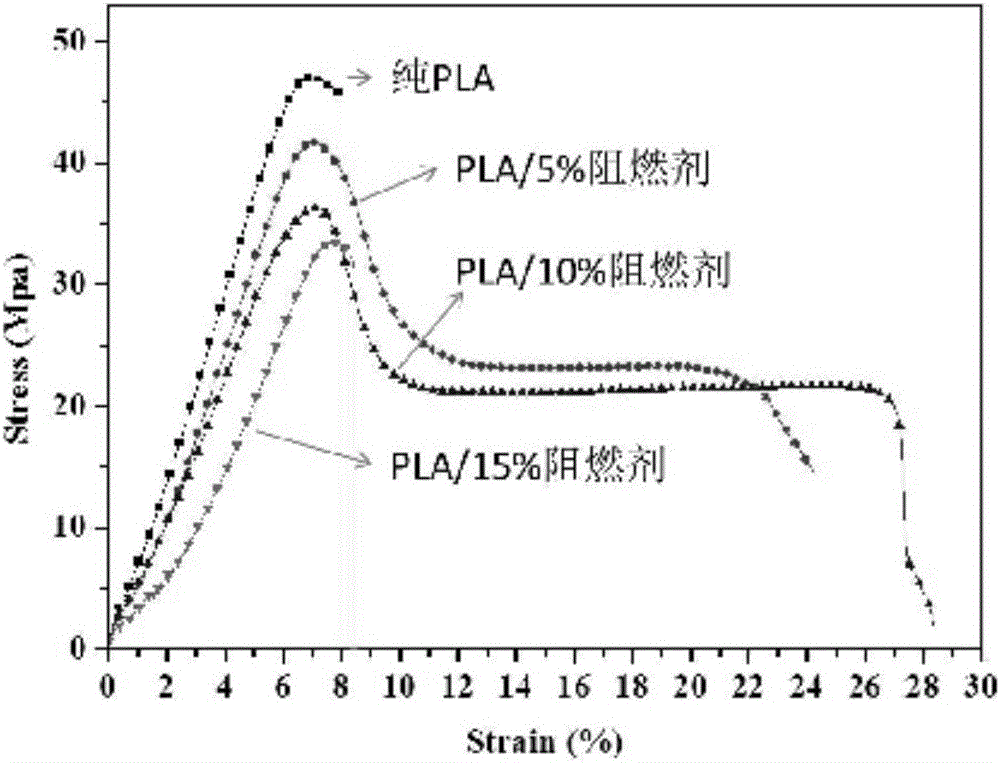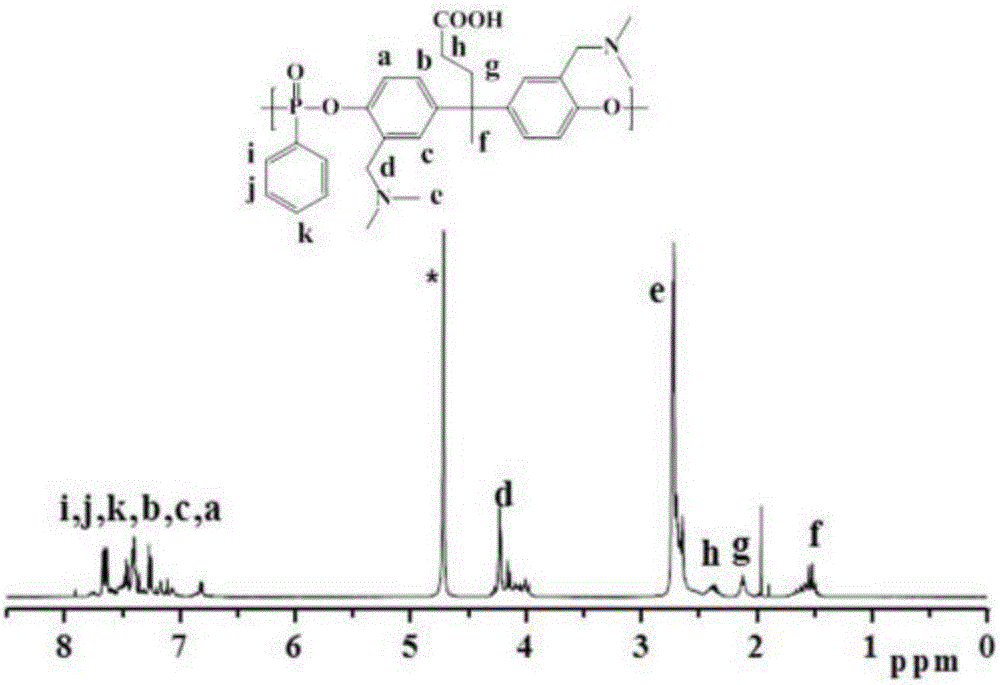Preparation method of organic and inorganic hybrid with core-shell structure
A core-shell structure and hybrid technology, which is applied in the field of preparation of core-shell structure organic-inorganic hybrids, can solve the problems of difficulty in processing and recycling flame-retardant polymers, damage to mechanical properties and processing properties, and poor thermal stability. Good synergistic effect, improved mechanical properties, and improved compatibility
- Summary
- Abstract
- Description
- Claims
- Application Information
AI Technical Summary
Problems solved by technology
Method used
Image
Examples
Embodiment 1
[0041]Add 14.3 g of bisphenolic acid (DPA; 4,4-bis(4-hydroxyphenyl) valeric acid, CAS No. 126-00-1), 20.5 g of dimethylamine aqueous solution (33 wt%), and 20.5 g of formaldehyde in a 250 mL three-necked flask. 16.2g of aqueous solution (37wt%) and 100ml of ethanol were protected by nitrogen, and reacted at 25°C for 20 hours under mechanical stirring. Finally a clear solution was obtained. The solvent was removed by rotary evaporation to obtain a crude product.
[0042] The crude product was dissolved in 300 mL of deionized water to obtain a transparent light yellow solution, 20 g of activated cation exchange resin 732 was added, and stirred for 1 hour. Filtration, the resulting clear night rotary evaporation to remove water. 80C vacuum drying for 8 hours. Monomer (II) is obtained. (That 1 H NMR and 13 C NMR spectrum see attached figure 1 )
[0043] Synthesis of polyphosphate (III): Add 20 g of monomer (II), 5.1 g of triethylamine and 120 mL of acetonitrile into a 250 ...
Embodiment 2
[0051] Add 14.3 g of bisphenolic acid (DPA; 4,4-bis(4-hydroxyphenyl) valeric acid, CAS No. 126-00-1), 20.5 g of dimethylamine aqueous solution (33 wt%), and 20.5 g of formaldehyde in a 250 mL three-necked flask. 16.2g of aqueous solution (37wt%) and 100ml of ethanol were protected by nitrogen, and reacted at 25°C for 20 hours under mechanical stirring. Finally a clear solution was obtained. The solvent was removed by rotary evaporation to obtain a crude product.
[0052] The crude product was dissolved in 300 mL of deionized water to obtain a transparent light yellow solution, 20 g of activated cation exchange resin 732 was added, and stirred for 1 hour. Filtration, the resulting clear night rotary evaporation to remove water. 80C vacuum drying for 8 hours. Monomer (II) is obtained.
[0053] Synthesis of polyphosphate (III): Add 20 g of monomer (II), 5.1 g of triethylamine and 120 mL of acetonitrile into a 250 ml three-necked flask, and flush with nitrogen gas for 10 minut...
PUM
 Login to View More
Login to View More Abstract
Description
Claims
Application Information
 Login to View More
Login to View More - Generate Ideas
- Intellectual Property
- Life Sciences
- Materials
- Tech Scout
- Unparalleled Data Quality
- Higher Quality Content
- 60% Fewer Hallucinations
Browse by: Latest US Patents, China's latest patents, Technical Efficacy Thesaurus, Application Domain, Technology Topic, Popular Technical Reports.
© 2025 PatSnap. All rights reserved.Legal|Privacy policy|Modern Slavery Act Transparency Statement|Sitemap|About US| Contact US: help@patsnap.com



